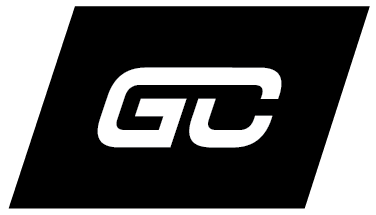Athlete Development | The New Sport Career Frontier
I love the field of athlete development. And I am going to tell you why.
But first a quick preamble. Besides being a player, I’ve been involved in athlete development probably my whole life in a variety of different ways. First, it was as a coach. I was an assistant coach for my brother's peewee hockey team. I then by happenstance ended up creating development camps for a Tier II Jr. A hockey team (how can you ever forget the Victoria Salsa?). From there, I was given the opportunity to coach Division I hockey at Quinnipiac University, which was an awesome experience working with great people. I even had the chance to briefly scout professionally for the Vancouver Canucks, which was a fascinating experience and provided me with a different perspective even though I was about as far from making any decisions as you could possibly be.
As a coach, I noticed that some of the most talented athletes or those with the highest levels of skill, weren’t necessarily the players who could bring it day over day. It also became quite apparent that the decisions that athletes were making away from the playing surface had a massive impact on what they did on it.
As a coaching staff, we’d try and control for bad decision making by athletes through the use of carrots and sticks. Basically, the team’s rules and outlined expectations. However, those rules and expectations were geared toward minimizing the negative impact on the team’s performance, it’s perception in the broader university community and the team’s overall culture. Generally, our focus on what was taking place away from the arena never broadened beyond mitigating negatives. In many ways, this is still the focus of most organizations and teams.
It wasn’t until I migrated into the world of professional athlete transition and athlete development that the light bulb went off. The opportunity to talk with literally hundreds of active and retired professional athletes, finally helped me see and eventually articulate a major gap in my thinking that I didn’t get as a DI assistant coach.
What I was missing was that in order to drive real performance outcomes (of course not including foundational items like practice, training, etc.) you must create an architecture around the athlete that supports the following key things, some of which are not necessarily obvious:
Personal self-awareness
The greater the athlete is at understanding his or her personality traits, strengths weaknesses and behavioral tendencies
Separation
The ability to separate from the sport (and direct peers) even just briefly on a semi-regular basis, remembering that in many instances family and friends don’t provide that separation.
Guided and unguided exploration, which touches two key themes:
Exposure to people and relationship building opportunities beyond sport
The ability to examine topics and outside interests important to the individual athlete
A confidential point of interaction to ‘release valve’ sport driven tensions, anxiety or fears.
The opportunity to interact with a trusted source that is completely removed from the coaching, training and sports structure to simply process the sports reality.
And the kicker realization? Even if this alternative performance architecture has been developed and surrounds the entire athlete, if athlete engagement strategies aren’t executed from both the highest and lowest levels of the organization, it won’t matter. The performance benefits can’t be realized across the athlete population.
So this brings me to my lead-off statement, I love athlete development because our field requires big tent thinking. Any approach that is designed to optimize individual or organizational performance is probably relevant in our field. The examples are endless. What NASA is doing to mitigate stress for the families of its astronauts living on the space station is as relevant as how economists use behavioural science to ‘nudge’ individuals to improve long-term financial and health decision making.
It is what Roger Martin has called ‘integrative thinking’. Integrative thinking is, ‘the ability to face constructively the tension of opposing ideas and, instead of choosing one at the expense of the other, generate a creative resolution of the tension in the form of a new idea that contains elements of the opposing ideas but is superior to each’. This kind of thinking is hard, but it is ridiculously FUN.
I’ve said it before and I’ll say it again, our role at Game Change and as athlete development specialists is to drive optimal performance outcomes on the playing surface and off. The sooner coaches, general managers, sports organizations and individual athletes come to realize the outsized benefits of this ‘new’ performance architecture, the sooner athletes can be optimized for a broader spectrum of performance.
Success in our field requires individuals who can think across a wide range of different domains and identify winning concepts in each, and then create something new and then apply it. Simply put, integrative thinking coupled with an understanding that you must drive and measure athletes and organizational outcomes toward elite performance.
It is fun, challenging and nuanced work. And that is what I love about our field.
Game Change was founded in 2011 to serve and enhance the athlete development needs of major professional and elite sport organizations and athletes. Game Change specializes in customized research and assessment services, the development of applied interventions and resources designed to provide long-term positive outcomes for organizations and individual athletes. Game Change believes strongly in sport as a catalyst for societal change and adheres to the philosophy of ‘changing the world one athlete at a time’.




